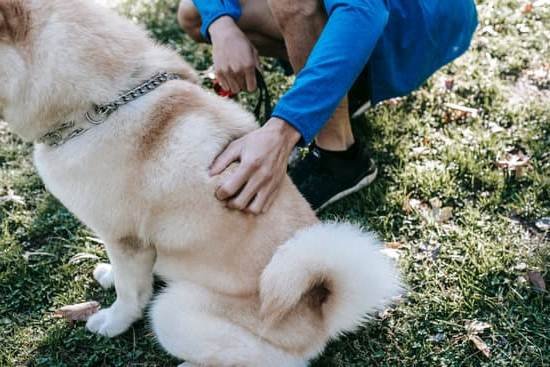and Solutions
There are a few common problems that can occur while crate training a dog, and fortunately, there are also solutions to each of these problems.
The first problem is that the dog may refuse to enter the crate. One way to solve this is to put a treat or toy inside the crate to entice the dog to go in. Once the dog is inside, praise him and give him the treat or toy.
If the dog is reluctant to stay in the crate, put him in for a very short time and gradually increase the amount of time he spends in the crate. If the dog whines or barks in the crate, do not let him out until he stops. He will eventually learn that if he barks or whines, he will not be released from the crate.
Another common problem is that the dog may relieve himself in the crate. This can be prevented by taking the dog outside frequently to relieve himself and by not leaving the dog in the crate for too long.
If the dog has an accident in the crate, clean it up immediately and put the dog back in the crate. Do not scold the dog, as this will only make him more reluctant to enter the crate.
How To Crate Train A New Dog
The idea of crate training is to create an environment that is both comfortable and familiar for your new dog, and to use the crate as a tool to help with housebreaking.
The crate should be just large enough for your dog to stand up and turn around in, and should be placed in a quiet, comfortable place in your home.
When you first bring your new dog home, put the crate in a room where the family spends a lot of time, such as the living room or kitchen. Put a soft blanket or towel in the crate, along with a few of your dog’s favorite toys.
When your dog is calm, give him a few treats and tell him what a good dog he is. Then, put him in the crate and close the door.
If your dog starts to cry, whining or barking, don’t respond. He will eventually stop and will probably sleep. If your dog is still crying after a few minutes, you can try opening the crate door a crack and seeing if he will quiet down. If he doesn’t, close the door and wait a few minutes before trying again.
If your dog is quiet in the crate, you can start to leave him alone for short periods of time. Begin by leaving him in the crate for just a minute or two, and then gradually increase the time.
Never leave your dog in the crate for more than three hours at a time, and make sure he has plenty of water and access to his potty area.
The crate should not be used as a punishment. The idea is to make the crate a happy, comfortable place for your dog to be.
How Long To Crate Train A Dog At Night
There is no one-size-fits-all answer to this question, as the length of time needed to crate train a dog at night will vary depending on the individual dog’s temperament and personality. However, crate training a dog at night typically takes between one and two weeks.
The first step in crate training a dog at night is to get your dog used to spending short periods of time in the crate during the day. Start by putting your dog in the crate for a few minutes at a time, and gradually increase the amount of time your dog spends in the crate. Once your dog is comfortable spending short periods of time in the crate, you can start crate training your dog at night.
Start by putting your dog in the crate for a few minutes at a time, and gradually increase the amount of time your dog spends in the crate. Once your dog is comfortable spending short periods of time in the crate, you can start crate training your dog at night.
The key to successfully crate training a dog at night is to be patient and take things slowly. Don’t try to crate train your dog for too long at night at first, as this may cause your dog to become anxious and stressed. gradually increase the amount of time your dog spends in the crate each night until your dog is sleeping comfortably in the crate overnight.
How To Crate Train Dogs
There are a few things to remember when crate training a dog. The crate should be big enough for the dog to stand up, turn around, and lie down in. The dog should also have a cushion or bed in the crate.
The first step is to get the dog used to the crate. Put the crate in a place where the dog spends a lot of time, such as the family room. Put the dog’s bed inside the crate and let the dog play with it. praise the dog when it goes in the crate.
Once the dog is used to the crate, start putting it in the crate for short periods of time. Start with 5 minutes and then increase the time by 5 minutes each day. Once the dog is comfortable in the crate for an hour, it is ready to be left alone.
When crate training a dog, it is important to never use the crate as a punishment. The crate should be a place the dog enjoys going to.
Best Dogs For Crate Training
There are a number of different factors that you need to consider when you are choosing a dog for crate training. Some dogs are better suited for it than others. Here are some of the best dogs for crate training:
1. Labrador Retrievers – Labs are one of the best dogs for crate training because they are so easy to train. They are also very calm and submissive, which makes them perfect for crate training.
2. Golden Retrievers – Goldens are also very easy to train and are very calm and submissive. They are perfect for crate training.
3. German Shepherds – German Shepherds are one of the best dogs for crate training because they are so intelligent. They learn quickly and are very obedient.
4. Bulldogs – Bulldogs are one of the best dogs for crate training because they are so calm and docile. They are not as active as other breeds, which makes them perfect for crate training.
5. Greyhounds – Greyhounds are one of the best dogs for crate training because they are so calm and submissive. They are not as active as other breeds, which makes them perfect for crate training.

Welcome to the blog! I am a professional dog trainer and have been working with dogs for many years. In this blog, I will be discussing various topics related to dog training, including tips, tricks, and advice. I hope you find this information helpful and informative. Thanks for reading!





